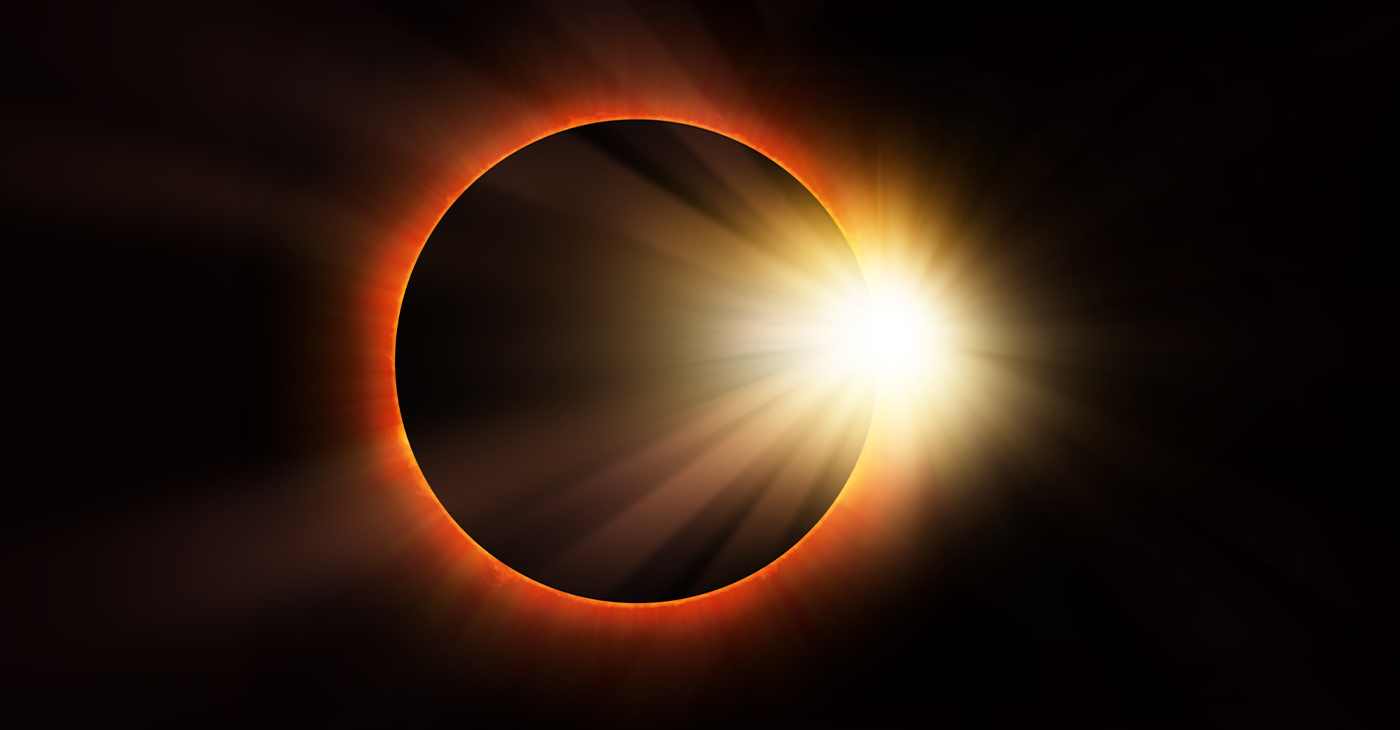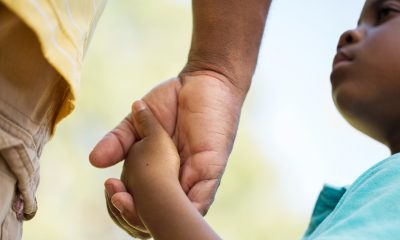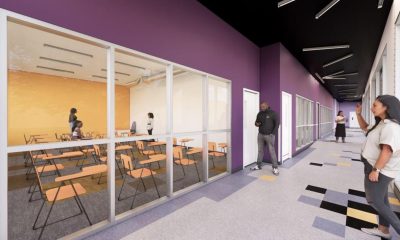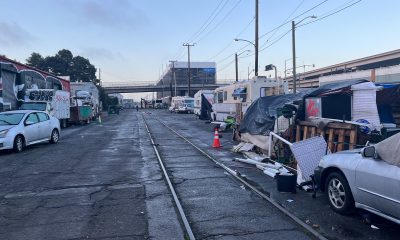Commentary
COMMENTARY: 8 tips for visiting the sick
MINNESOTA SPOKESMAN -RECORDER —
By Juliet Mitchell
“When… I was sick… you visited me.” Matthew 25:36
It’s not a happy subject to discuss, but it’s inevitable that human bodies will experience sickness, disease or break down. Since this is a fact of life, a part of the human condition, we are likely to be called upon to visit someone who is sick at some point.
So, let’s get real about this whole visiting the sick thang, y’all. Yes, my southern girl is coming out. Yes, I’m a GRITS (Girl Raised in the South). Growing up in the South around a close-knit community of relatives and friends, acquaintances and even strangers, visiting the sick was as much a part of life as farming, canning and going to church.
As good family, good community members and good church folk, you cooked some food, packed it up, cleaned yourself up and went to visit. Visiting included laughing (if the person was up to it), talking (if the person had the interest, strength or energy), listening (if the person wanted to listen), and sometimes sitting quietly.
Your visit may have required feeding, cleaning (yes, even cleaning the person — especially relatives and close, close friends) and sadly, sometimes that visit meant shedding some tears.
We know that at any age, sick and disease can take hold to our frail human bodies; however, as our population ages, it’s more likely that we will be visiting our elders as they approach the end of life.
I’ve spoken to medical professionals, clergy and caregivers and gathered etiquette considerations for visiting those persons.
8 life etiquette tips for visiting the sick
- Please call and arrange a time to visit. There are numerous considerations concerning time, feeding, bathing, dispensing of medication and a sleep schedule. Do not be offended if the caregiver gives you specific times to visit rather than allowing you to stop by at your convenience.
- Ask if it’s OK to bring something for the sick person to eat or drink. That person may be on a restricted diet or may not be taking food at all.
- On that note, it is also considerate to bring something for the family/other visitors if you’re visiting a home. If you do not know the person’s likes and dislikes, ask. Some general things that are usually needed include bottled water and/or juice; fruit, sandwich fixings, prepared meals. Remember to include paper towels, napkins, even disposable cutlery and cups. We live in a diverse world, so, again, if you don’t know, ask.
- Be as clean as you can and be prepared to take your shoes off if visiting a home (bring clean indoor shoes if you must wear shoes). Also, be prepared to wash your hands, use sanitizer and/or wear a mask.
- Be willing to sit in silence. Your presence and your positive energy are important, not necessarily a whole lot of chatter. I’ve actually been told that too much talking can be disturbing to the sick.
- While we’re on the topic of speaking, remember to tone it down. Some of us can be too loud. You might say, “Well, I’m just loud” or “That’s just the way I talk!” But this isn’t about you. Keep the volume low.
- Keep your visits short. A 10-, 15- or 20-minute visit is long enough. I know that it may seem cold, but according to my “research,” — depending on the degree and extent of the illness — the energy of visitors can be “draining” and de-energizing for the person who is ill.
- Should you bring flowers or a gift? Well, that depends. Again, ask. Besides the physical and emotional aspects of caring for the ill, families and caregivers are often faced with the stress, weight and worry of financial demands, as well. Perhaps a gift card or a monetary gift would better help to meet the needs of that family.
Do you have any etiquette tips related to visiting the sick? Please share them with me at jmitchell@spokesman-recorder.com.
This article originally appeared in the Minnesota Spokesman-Recorder.
Activism
Oakland Post: Week of April 24 – 30, 2024
The printed Weekly Edition of the Oakland Post: Week of April 24 – 30, 2024

To enlarge your view of this issue, use the slider, magnifying glass icon or full page icon in the lower right corner of the browser window. ![]()
Activism
Oakland Post: Week of April 17 – 23, 2024
The printed Weekly Edition of the Oakland Post: Week of April 17 – 23, 2024

To enlarge your view of this issue, use the slider, magnifying glass icon or full page icon in the lower right corner of the browser window. ![]()
Commentary
Opinion: Surviving the Earthquake, an Eclipse and “Emil Amok.”
Last Friday, a 4.8 magnitude earthquake shook New York City, reported as the “biggest earthquake with an epicenter in the NYC area since 1884” when a 5.2 quake hit. A bit bigger. The last quake similar to Friday’s was a 4.9 in 1783.Alexander Hamilton felt it — 241 years ago. That’s why New Yorkers were freaking out on Friday. They were in the room where it happens.

By Emil Guillermo
I’m a Northern Californian in New York City for the next few weeks, doing my one-man show, “Emil Amok, Lost NPR Host, Wiley Filipino, Vegan Transdad.”
I must like performing in the wake of Mother Nature.
Last Friday, a 4.8 magnitude earthquake shook New York City, reported as the “biggest earthquake with an epicenter in the NYC area since 1884” when a 5.2 quake hit. A bit bigger. The last quake similar to Friday’s was a 4.9 in 1783.
Alexander Hamilton felt it — 241 years ago.
That’s why New Yorkers were freaking out on Friday. They were in the room where it happens.
And it just doesn’t happen that often.
Beyonce singing country music happens more frequently.
When I felt New York shake last week, it reminded me of a time in a San Francisco TV newsroom when editors fretted about a lack of news an hour before showtime.
Then the office carpeting moved for a good ten seconds, and the news gods gave us our lead story.
On Friday when it happened in NYC, I noticed the lines in the carpeting in my room wiggling. But I thought it was from a raucous hotel worker vacuuming nearby.
I didn’t even think earthquake. In New York?
I just went about my business as if nothing had happened. After living near fault lines all my life, I was taking things for granted.
Considering the age of structures in New York, I should have been even more concerned about falling objects inside (shelves, stuff on walls) and outside buildings (signs, scaffolding), fire hazards from possible gas leaks, and then I should have looked for others on my floor and in the hotel lobby to confirm or aid or tell stories.
Of course, as a Californian who has lived through and covered quakes in the 4 to 6 magnitude range, I tried to calm down any traumatized New Yorker I encountered by taking full responsibility for bringing in the quake from the Bay Area.
I reassured them things would be all right, and then let them know that 4.8s are nothing.
And then I invited them to my consoling post-Earthquake performance of “Emil Amok, Lost NPR Host…”
It was the night of the eclipse.
ECLIPSING THE ECLIPSE
In New York City, the eclipse was about 90 percent visible. Good enough for me. Though a full solar eclipse is a celestial rarity, blockages of any sort aren’t generally celebrated. My one-man play is about growing up with the eclipsed history of American Filipinos and how I struggle to unblock all that.
For example, did you know the first Filipinos actually arrived to what is now California in 1587? That’s 33 years before the Pilgrims arrived in America on the other coast, but few know the Filipino history which has been totally eclipsed.
I was in Battery Park sitting on a bench and there was a sense of community as people all came to look up. A young woman sitting next to me had a filter for a cell phone camera. We began talking and she let me use it. That filter enabled me to take a picture of the main event with my iPhone.
For helping me see, I invited her and her boyfriend to come see my show.
Coincidentally, she was from Plymouth, Massachusetts, near the rock that says the year the Pilgrims landed in 1620.
In my show she learned the truth. The Pilgrims were second.
History unblocked. But it took a solar eclipse.
Next one in 2044? We have a lot more unblocking to do.
If you’re in New York come see my show, Sat. April 13th, 5:20 pm Eastern; Fri. April 19, 8:10 pm Eastern; and Sun. April 21st 5:20 pm Eastern.
You can also livestream the show. Get tickets at www.amok.com/tickets
About the Author
Emil Guillermo is a journalist and commentator. He does a mini-talk show on YouTube.com/@emilamok1. He wishes all his readers a Happy Easter!
-

 Activism4 weeks ago
Activism4 weeks agoOakland Post: Week of March 27 – April 2, 2024
-

 Community2 weeks ago
Community2 weeks agoFinancial Assistance Bill for Descendants of Enslaved Persons to Help Them Purchase, Own, or Maintain a Home
-

 Activism3 weeks ago
Activism3 weeks agoOakland Post: Week of April 3 – 6, 2024
-

 Business2 weeks ago
Business2 weeks agoV.P. Kamala Harris: Americans With Criminal Records Will Soon Be Eligible for SBA Loans
-

 Activism2 weeks ago
Activism2 weeks agoOakland Post: Week of April 10 – 16, 2024
-

 Community2 weeks ago
Community2 weeks agoAG Bonta Says Oakland School Leaders Should Comply with State Laws to Avoid ‘Disparate Harm’ When Closing or Merging Schools
-

 Community1 week ago
Community1 week agoOakland WNBA Player to be Inducted Into Hall of Fame
-

 City Government2 weeks ago
City Government2 weeks agoLAO Releases Report on Racial and Ethnic Disparities in California Child Welfare System






















































